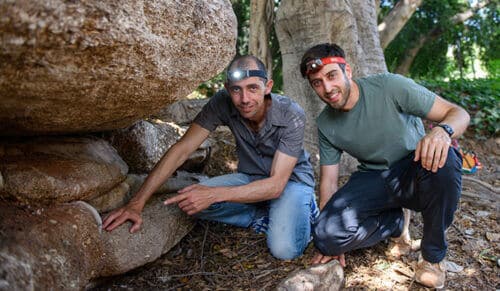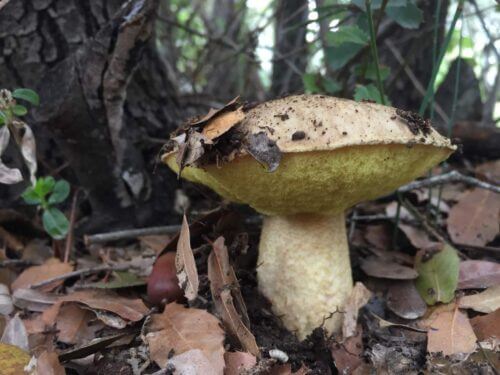Branched networks of fungi manage a carbon economy underground that connects trees of different species

Deep in the soil of the forest hides a world bustling with activity and chaos, a part of which was recently revealed in a study by scientists of the Weizmann Institute of Science. Dr. Tamir Klein from the Department of Plant and Environmental Sciences and his research student, Ido Rog, revealed branched underground networks of fungi, which connect the root systems of trees of different species, and enable the exchange of minerals, nutrients and water; In return, the fungi benefit from a supply of carbon derived from the trees. Although symbiotic relationships between trees and fungi have been known for decades, this is the first time that such cooperation between mature trees of different species has been documented under forest conditions. The findings add a new dimension to the familiar picture of the ecosystem, and herald a change in perception on the question of who controls the carbon economy in forests.
The underground research actually started from a much higher starting point: above the treetops. As part of post-doctoral research in Switzerland, Dr. Klein operated an isotopic marking system that was installed with the help of a construction crane on mature trees of various species, including spruce, pine, beech and cedar. Contrary to expectations, it was discovered that the trees transfer carbon between them. But something in the numbers didn't add up - the amount of carbon isotope stored in the trees was too large to be explained only by the results obtained from the measurements of the carbon emissions and its fixation above the tops of the trees.
To solve the puzzle of carbon transfer, Rog turned over every stone and dug in the forest soil in order to locate the fine roots and trace their paths through the soil to the trees from which they grow. He later analyzed using genetic sequencing methods more than 1,000 root tips of 12 trees from four species: spruce, pine, cedar and beech. With the help of these measures, he was able to identify several species of ectomycorrhizal fungi, which are partners in carbon transfer. "Among the fungi we sampled, we identified at least eight different species that are not specific to this or that tree and were common to the four tree species we analyzed, 90 percent of which were associated with at least two host tree species," says Rog. "We also found that in trees with greater botanical proximity, such as spruce and pine, the composition of the fungi associated with the tips of the roots was more similar, and they transferred more carbon between these trees than between tree species that are less botanically related, such as spruce and beech. However, carbon exchange in one form or another existed between all types of trees."

From an evolutionary point of view, the expectation is to see cooperation only between trees of the same species, since in doing so they guarantee themselves a competitive advantage over other species; This is of course assuming that the management of the forest resources is indeed under the control of the trees. "Counterintuitively, we have shown that different species of trees share their wealth with each other - and it is possible that this cooperative economy is made possible thanks to the existence of some missing hand," says Dr. Klein. The scientists believe that it is quite possible that the fungi are the ones who run the show and determine the distribution of resources among the trees according to their specific needs. "Fungi need to secure their carbon sources; Therefore, they have an interest in ensuring that all the trees in their environment - of any species - are healthy and strong. This activity of the fungi has distinct advantages when the forest is under stress, for example as a result of climate change, drought, fire or disease," adds Rog.
The scientists are currently examining this hypothesis in Israel's forests focusing, among other things, on carob trees, in an attempt to understand how these green and lush trees survive extremely high temperatures and dry conditions. The researchers are investigating whether carob trees planted in mixed forests of oaks and pines also become part of the fungi's carbon supply network, and if so, which species of fungi connect the root systems of these trees. "The carob tree is attributed with hidden powers in biblical myths. And maybe the secret of his power lies in underground mushrooms at all?" says Rogue.
In further follow-up research, the researchers plan to create controlled conditions of drought to investigate the role the fungi play in the forest ecosystem when it is stressed.
"On a theoretical level, our findings change the way we think about trees, and scientists are beginning to recognize that trees cooperate more than they thought until now," says Dr. Klein. "On a practical level, we work in collaboration with KKL-Junk to encourage the mixing of species in Israel's forests, with the aim of improving their resilience and ecological stability."

3 תגובות
Wonderful work. Builds beautiful relationships between man and the forest.
It is obvious…
Most amazing